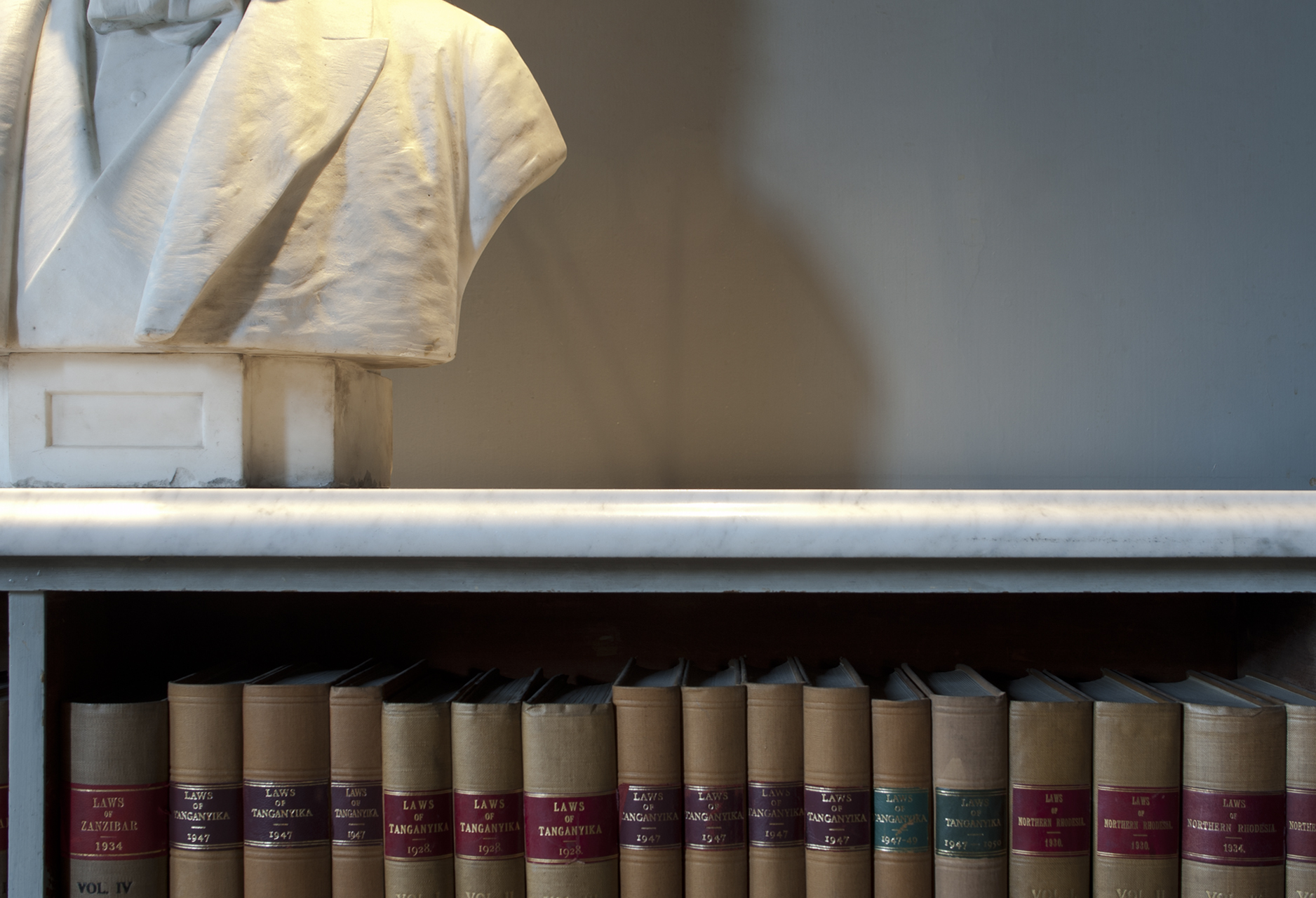THE WS SOCIETY ONLINE EXHIBITION 2024
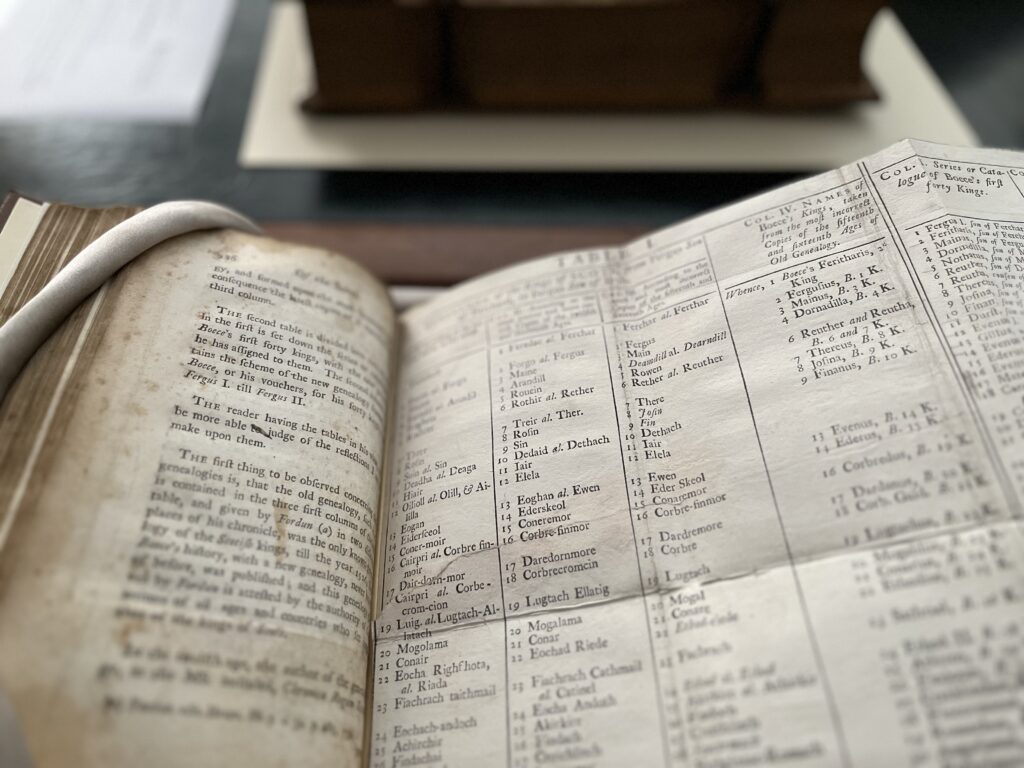
Father Thomas Innes (1662-1744) London : printed for William Innys, 1729.
The Great Gallery at Holyroodhouse Palace with its 96 portraits by Jacob de Wet of mostly mythical Scottish monarchs is one of the most unexpected sights handed down from Jacobean Edinburgh. The paintings express an idea of Scotland’s Ancient Monarchy as an unbroken line predating the Romans. The Ancient Monarchy was an important totem of continuity and identity but it was based upon myths and inventions regarding the royal bloodline that had been given excessive authority by Scottish humanist historians such as Hector Boece.
James Anderson’s correspondent, the great Catholic and Scottish antiquary Father Thomas Innes (1662-1744) demolished the idea of the Ancient Monarchy once and for all with his ephochal 1729 Critical Essay on the Ancient Inhabitants of Scotland. The Ancient Monarchy had been a source of national pride and esteem for many in Scotland. For Innes, who spent most of his life overseas, the Ancient Monarchy was a source of national humiliation, an embarrassment in the face of other nations as well as providing a provoking spur to bad political actors.
Like Anderson, Innes would not live to see his greatest work, The Civil and Ecclesiastical History of Scotland published – it would finally reach print in 1853 but his desire to assist other scholars and the example of his published work and his manuscripts gave him wide and enduring influence.
Works by Father Thomas Innes
A Critical Essay on the Ancient Inhabitants of the Northern Parts of Britain
Father Thomas Innes (1662-1744) London : printed for William Innys, 1729.
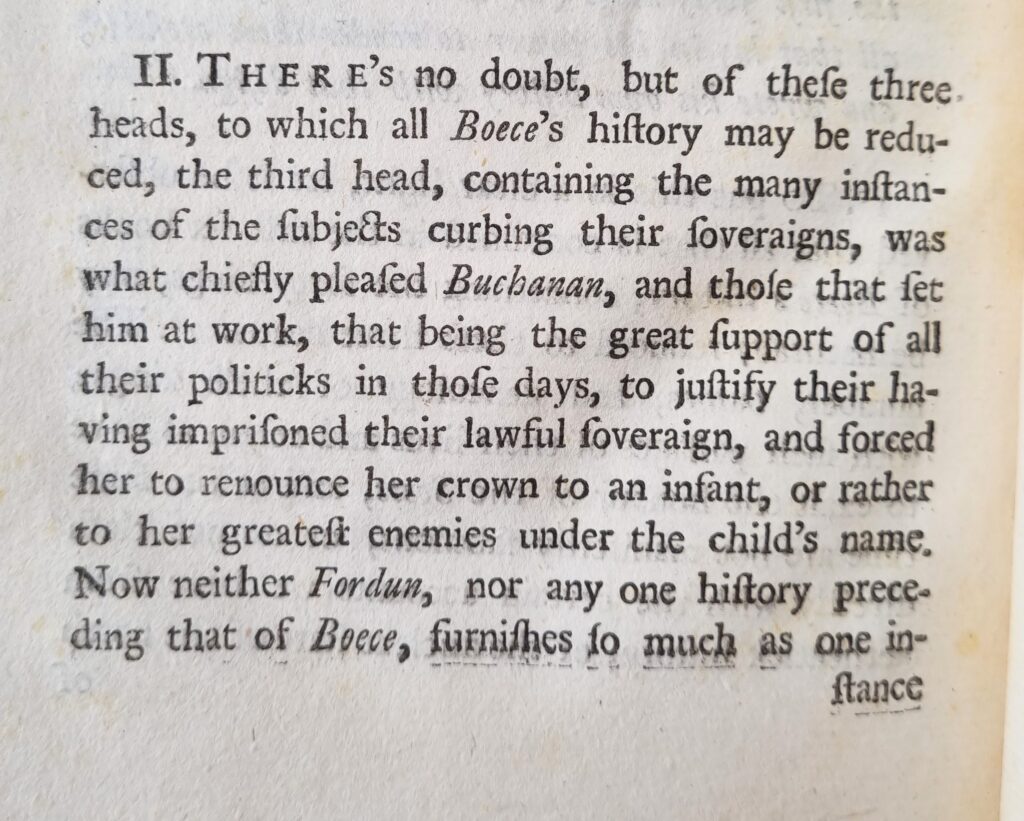
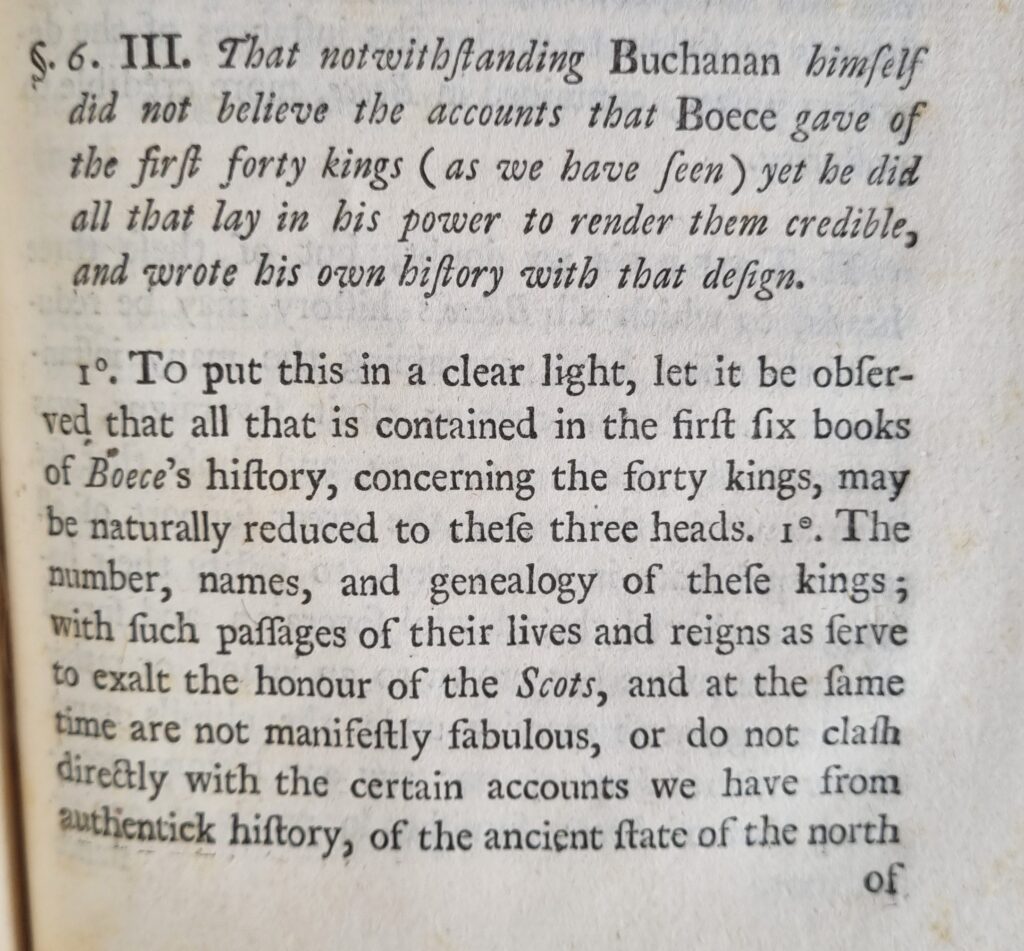
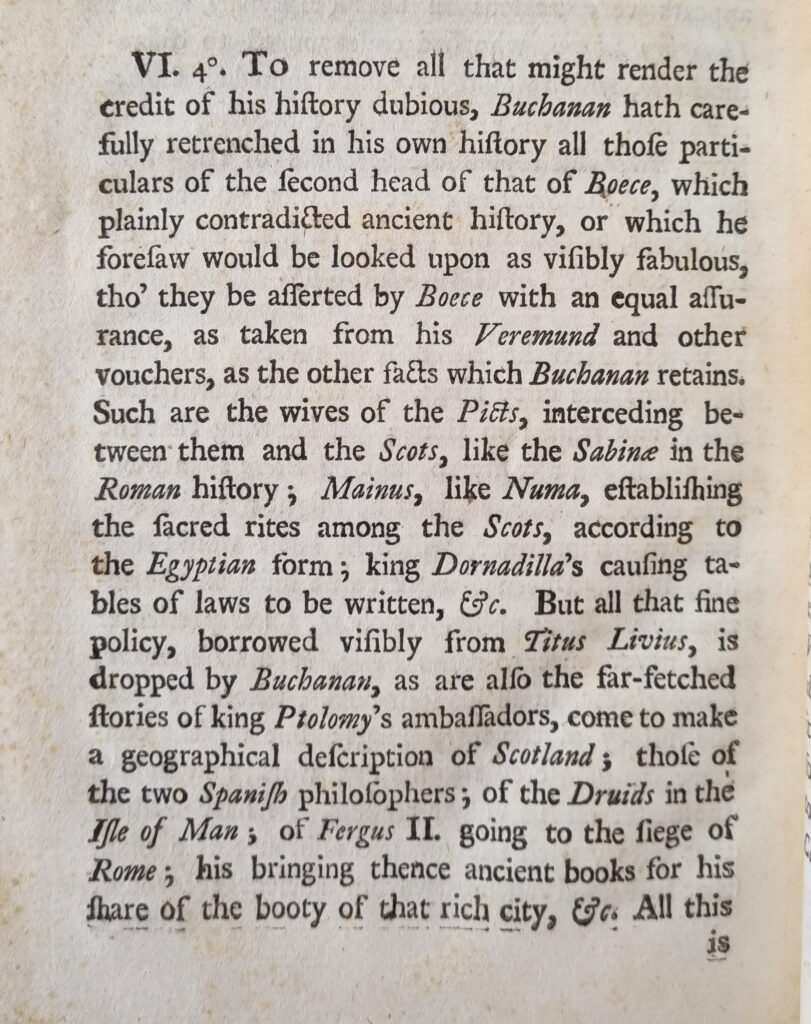
The Critical Essay was a killing blow to the myth of the ancient Scottish monarchy. This vastly influential book brought James Anderson’s ideas about the critical understanding of historical evidence and brought it to bear on the claims of Boece and Lesley that Scotland’s monarchy was of pre-Roman descent and pedigree. It was these claims that had led to the extraordinary parade of monarchical portraits in Holyroodhouse Palace beginning with Fergus I of 330 BC.
Charta authentica Roberti Seneschalli Scotiæ, ex archivo Collegii Scotorum Parisiensis edita [by L. Innes]. Cum observationibus historicis, quibus regiae Stuartorum stirpis natales ab injusta labe indicantur.
Lewis Innes (1651-1738) Parisiis: F. Muguet, 1695
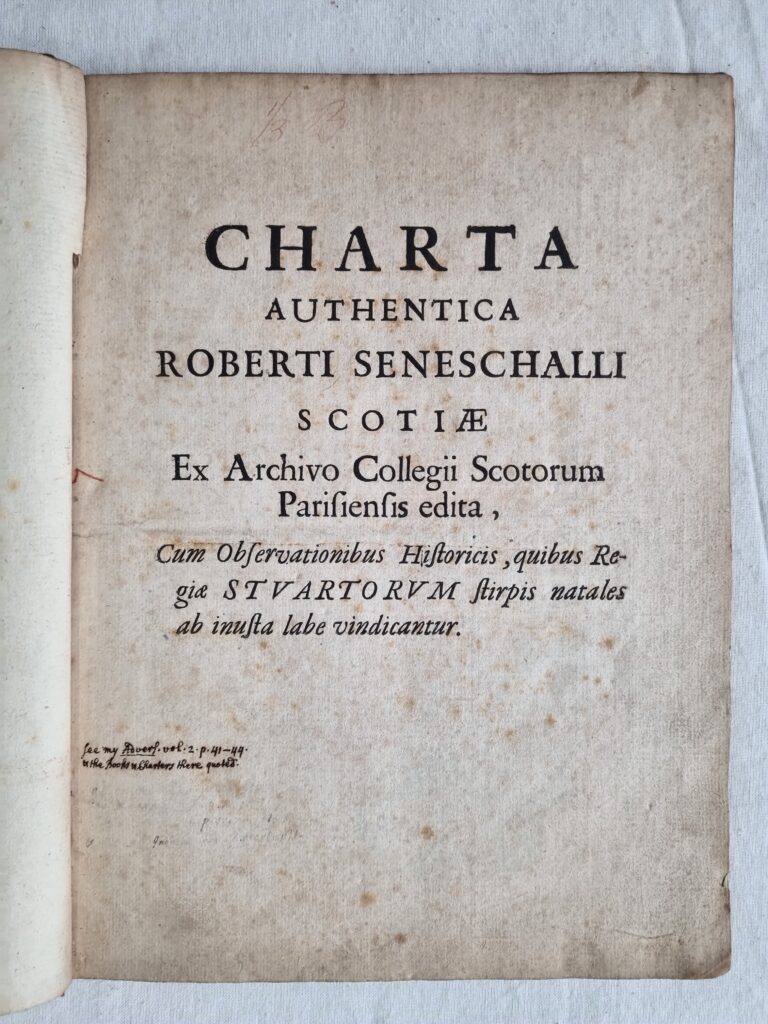
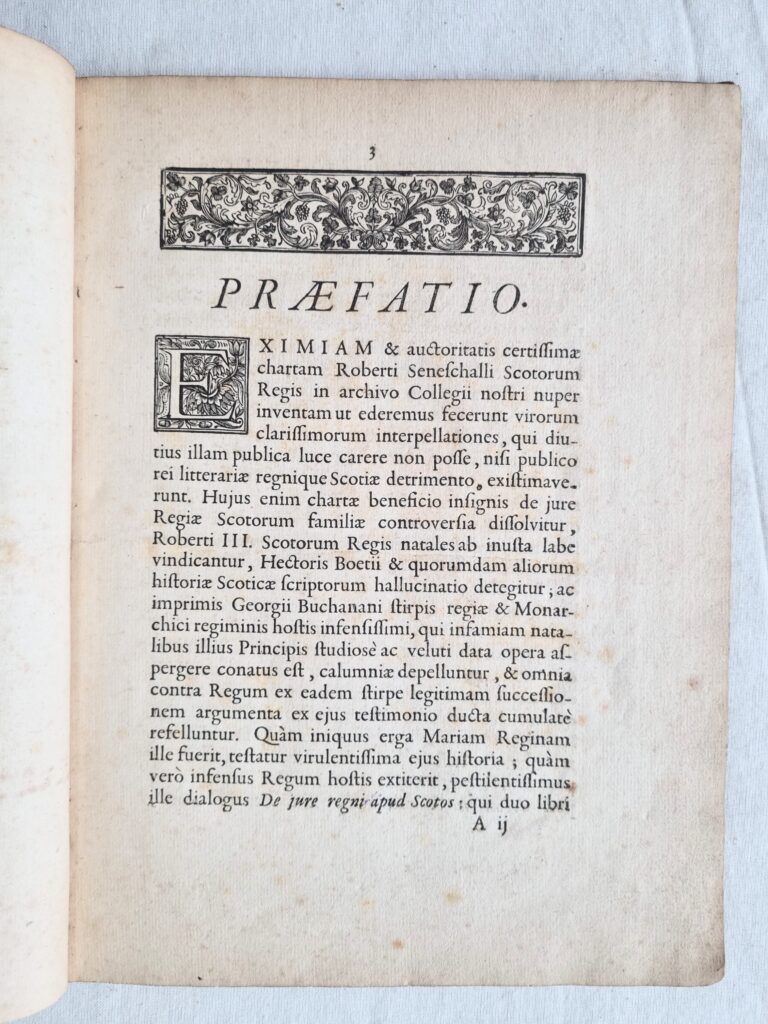
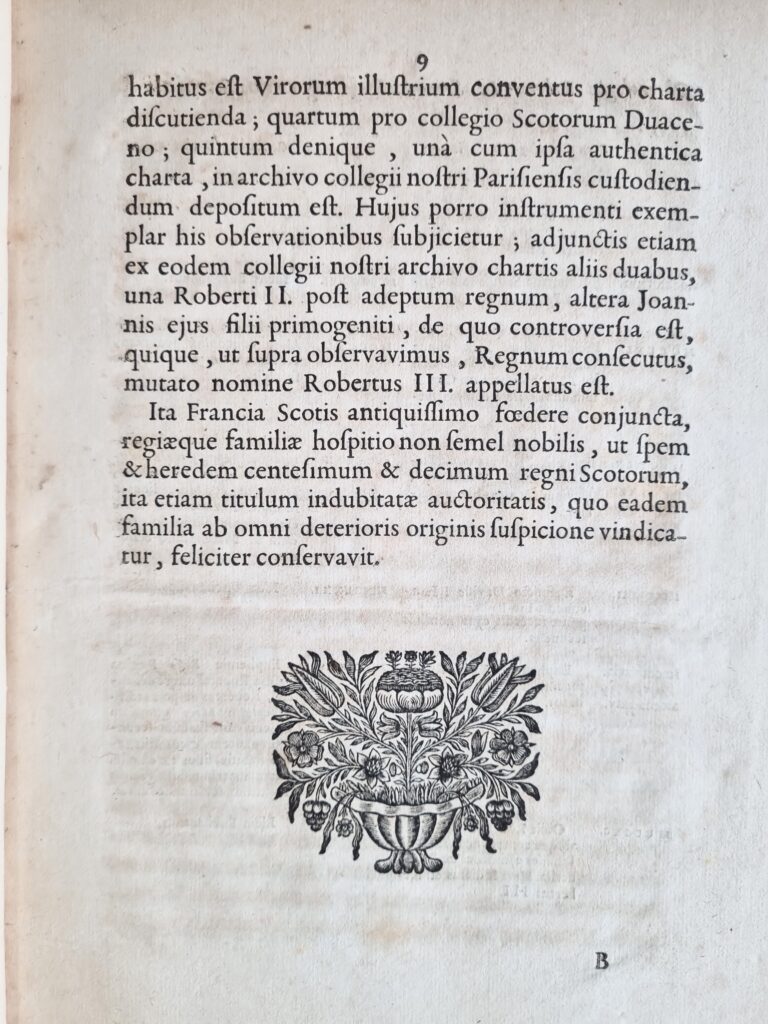
Lewis Innes and Thomas Innes were brothers and priests at the Scots College in Paris, where Lewis Innes served as Principal. The Charta Authentica marks one of the most remarkable occasions in the College’s intellectual life: a meeting of Scottish and French intellectuals and nobility to ascertain the credibility of manuscripts in the College’s library that purported to prove the legitimacy of King Robert III of Scotland.
One of biggest errors made by the Scottish humanist historians – especially in the context of the early eighteenth century attack on the concept of the independence of the Scottish crown – was the assertion of the illegitimacy of Robert III.
Robert’s father, then the Earl of Strathearn but later Robert II, had in the view of the humanist historians taken Elizabeth Mure as a mistress and his son by her, the future Robert III of Scotland, was therefore illegitimate and the monarchical line subsequently placed in question.
But a 1364 charter of Robert, Earl of Strathearn, found by Lewis Innes among manuscripts brought to Paris in the wake of the Scottish Reformation by the last Catholic Bishop of Glasgow, not merely confirmed that Robert had married Elizabeth Mure but contained a discussion of a papal dispensation given to the marriage, thereby conveying legitimacy to the son of the marriage, the future King Robert III. Lewis Innes had discovered this in 1681 and attempted to disseminate knowledge of it.
The debate at the meeting was led by the Maurist scholar Jean Mabillon, whose ideas on diplomatics would prove enduringly influential in Scotland through the work of Thomas Innes and the Presbyterian scholar and Writer to the Signet James Anderson.
The scholars established the charter as genuine in line with Mabillon’s new principles for assessing the reliability of ancient documents (“diplomatic” as it was known). The Charta was then put into print and distributed. This was the first real intervention by Mabillon’s new thinking around diplomatics in the politics of Scotland and it set the stage both for James Anderson’s career and Thomas Innes’ overturning of the myth of the Ancient Monarchy in Scotland.
For through this charter the controversy of the royal family of the Scots is refuted.. the fantasies of Hector Boethius and some other writers of Scottish history was revealed; and .. [that of] George Buchanan .. who has defamed the natives of that Prince (rough translation from the Latin).
Innes’ status as a Catholic priest was little or no bar to his participation and indeed leadership in the early eighteenth century intellectual life that Dr. Kelsey Jackson Williams has aptly called The First Scottish Enlightenment and his work is now seen as key to the changed thinking characteristic of his times.
Further Reading
There is no scholarly life of Innes, but the Innes Review, named for him, contains many useful papers, amongst which is
Anthony Ross, “Some Scottish Catholic Historians” Innes Review 1 (1950) 5-21
Also:
Brian M. Halloran The Scots College Paris 1603-1792 (Edinburgh 1997)
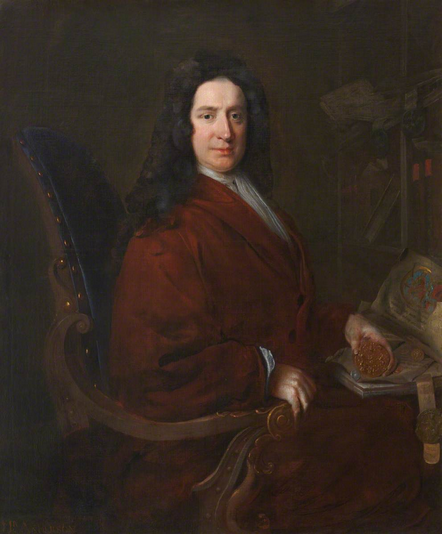
- Setting The Scene : Lawyers and Intellectuals Before 1722
